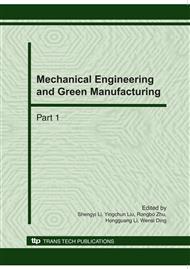p.1834
p.1840
p.1845
p.1850
p.1855
p.1859
p.1865
p.1870
p.1876
Study on the Tensile Strength Loss Rate of Glass Fiber 2D Woven Fabric Reinforced Laminates with Ladder Splicing
Abstract:
This research paper presents an experimental investigation on the tensile strength loss rate of glass fiber reinforced 2D woven fabric with ladder splicing laminate composites. On the basis of three kinds of ply sequence, two series of laminates with different plies numbers were prepared through RTM molding technology, including ladder splicing(LS) laminates and continuous laminates (CL). And the RTM technological parameters of RTM processing were designed as follows: injection temperature was room temperature, injection duration time was 180min and injection pressure was 0.5MPa, the epoxy resin based 2D glass fiber woven fabric RTM laminated specimen were prepared. According to the GB/T 1447-2005 standard test method, the tensile tests of the 2D glass fiber woven fabric laminates were carried out. Results show that the tensile strength loss rate of ladder splicing laminates is 11.05%, 9.37%, 7.78% while the number of plies is 8, 10, 12 respectively. In other words, the tensile strength loss rate is reduced with the plies number increasing. In addition, because of the concentration of tensile stress, all fractures of ladder splicing laminates occur at the site of splicing line.
Info:
Periodical:
Pages:
1855-1858
Citation:
Online since:
October 2010
Authors:
Keywords:
Price:
Сopyright:
© 2010 Trans Tech Publications Ltd. All Rights Reserved
Share:
Citation:


